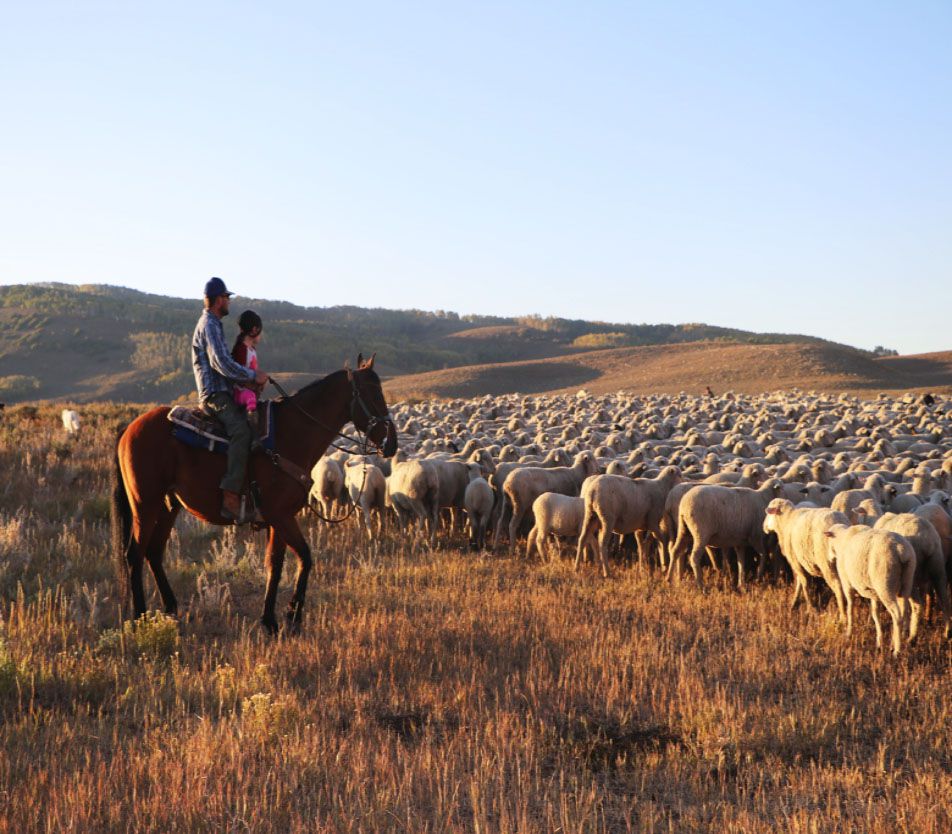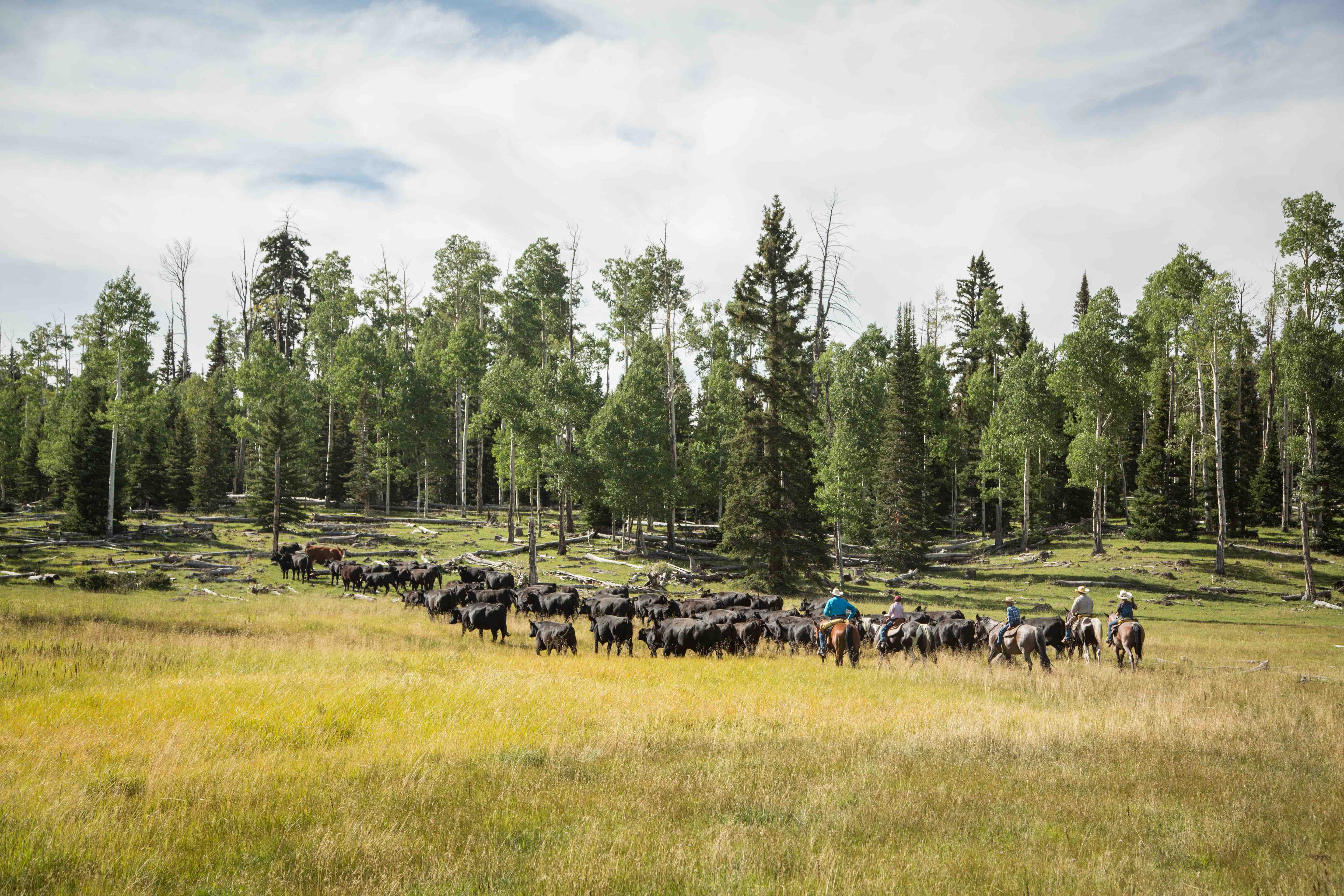Farmers and ranchers Working to Make Every Day ‘Earth Day’
Author
Published
4/22/2022
With the arrival of spring, many are drawn to the outdoors to enjoy the warming weather and the renewal of life that takes place with the plants and animals. Spring is also the time when many come to celebrate ‘Earth Day’, which this year takes place today, April 22.
Many strive to improve the environment in which we live, and tops among them are the farmers and ranchers who work the land every day – you might consider them the original environmentalists. Numbers from the Environmental Protection Agency continue to show that U.S. farmers and ranchers are leading the way in caring for our land, air and water. According to the latest numbers from EPA, U.S. agriculture reduced its overall emissions by 4.3% from 2019 to 2020.
Food is the most obvious connection between farmers and ranchers and their customers, but they also share a love for the environment. Farmers, ranchers and others who work in agriculture know they need to take care of the land and water in their care to make sure they produce food for years to come.
Farmers and ranchers are at the forefront of climate-smart farming, putting scientific solutions, technology and innovation to work to protect our land, air and water. They work hard to keep the land and soil healthy now and for future generations. They know their actions affect the environment. No one is closer to the earth than farmers and it is important to them to care for the land, water, and natural resources.
“One thing my father taught us is if you have land, you leave it in better condition than you found it, for the benefit of the next generation,” said Steve Osguthorpe, a sheep rancher and farmer in Summit County. “Protecting the soil and watersheds, that’s been the focus of our farming operations because we know that if we’re going to be in business tomorrow, we’ve got to take care of the land today.”

A Partner in Conservation
The Sand County Foundation, a prominent conservation group nationally, has been working with farmers and ranchers throughout the country to encourage voluntary conservation practices on private land. They’ve set up the ‘Leopold Conservation Award’ to recognize private landowners in 20 states for extraordinary achievement in conservation and have been presenting the award in Utah since 2007.
In Utah, the award is presented annually by Sand County Foundation, Utah Farm Bureau Federation, Western AgCredit and Utah Cattlemen’s Association. It has recognized ranchers from Box Elder County in the north and Tooele County in the West, all the way down to Beaver and Kane County in the South.
The organization came to work with farmers, ranchers, and foresters because they own and manage most of the private land in this nation and felt they held the keys to environmental improvement. The group believes conservation by landowners, either voluntarily or through incentives, provides more ecological benefits, at a lower cost and with lasting results than through more regulations.
The commitment of farmers and ranchers to conservation is evident by the variety of projects and measures many farmers and ranchers undertake, intending to leave the land better than how they found it.
This was certainly true for the Selman family of Box Elder County. The Selmans have employed many conservation practices through the years on their sheep ranch, including planting windbreaks for wildlife and bird nesting, rotational grazing, planting native vegetation, developing alternate water sources to protect stream areas, preserving water quality and quantity, and enhancing habitat for rare wildlife.
Old School Wisdom & Modern Methods
This same commitment can be said of the Yardley family of Beaver County, who have embraced a sacred stewardship for the land their livelihood depends on for five generations and yet also bring the most current methods of conservation to play on their ranch.
Best known for selling high quality beef cattle, the Yardleys know good livestock production begins with conservation practices that benefit the forage upon which their cattle rely.
“If we take care of the range, it will take care of us,” Gilbert said of grasses and shrubs that grow on their fragile desert range.
Their holistic and sustainable approach to range management, also applies to raising cattle and customer relations. In addition to a cow-calf operation, they sell high quality purebred Black Angus, Simmental and Maine Anjou cattle from coast to coast.
“You can do more damage in a year of overgrazing than you can make up for in a lifetime,” is another piece of fatherly advice Steven Yardley recalls from his dad, Gilbert. As a result, their herd’s size is reduced in seasons of drought. In extreme conditions they keep cattle off pastures to protect the landscape.
The Yardleys see managing natural resources as a science and an art; A science in learning, and an art in applying.
In partnership with others, they’ve rehabilitated thousands of acres of rangelands with controlled burns, removal of Juniper and Pinion trees and invasive brush, and reseeding with native grasses. Their work to stop the spread of Spotted knapweed in Garfield County has nearly eradicated the noxious weed. With the Utah Division of Wildlife Resources, the Yardleys planted water-loving grasses in streambed riparian areas and installed protective fencing to prevent erosion.

By digging several water catchment ponds along a creek, the Yardleys improve water quality downstream by catching silt while providing a water source in otherwise arid locations. Livestock, wildlife, songbirds and amphibians are also provided water in far reaches of the ranch thanks to the development of 12 wells, eight pipelines, and five springs that stand as oases in the desert.
The Yardleys are transitioning from windmills to solar panels to operate the wells. While both are sources of renewable energy, the panels are more reliable and have the ability to push water up pipelines.
Water
Water is the lifeblood of agriculture, especially in an arid state like Utah. That’s why many farmers and ranchers make a special effort to conserve water for future use. This is the case with the Butch and Jeanie Jensen’s fifth-generation T.N. Ranching Company and Tavaputs Ranch is located in Carbon County.
Although the Jensens’ operation is primarily a cattle ranch, the family diversifies its income through hunting, birding, and scenic tours of the ranch, including the Fremont Indian archaeological sites in Range Creek, which include pristine ruins and rock art. The ranch has also been home to several University of Utah and Utah State University research projects.
The family manages natural resources on its land in a manner that allows them to improve and flourish over time. The location of the Jensens’ ranch makes it prone to drought every 10 years. Because of this, they conserve water as much as possible. They have developed springs and constructed a large number of ponds. At their feedlot, the Jensens have fenced livestock out of active waterways, built runoff ponds, and drilled a well to supply water for their livestock, all of which helped to solve the issue of water pollution there.
The Ferry family of Box Elder County has also taken steps to improve water quality along with their cattle ranch and waterways.
The Ferrys removed invasive species along the Bear River before contouring and re-vegetating its banks. To reduce erosion and improve water retention, they’ve planted cover crops and use no-till practices on their corn and wheat fields.
They have also worked to remove invasive plants, which hurt soil quality and waste large amounts of water. The Ferrys removed several hundred acres of salt cedar trees, which lower the water table and create large deposits of salt in the soil.
Rather than burning or spraying an invasive plant like phragmites with chemicals, they have their cattle graze on the plant, naturally increasing the diversity of desirable wetland plants and improving wildlife habitat.
More of the Same Down South
The Heaton cattle ranch in Kane & Garfield County has more than 140,000 acres of private and federal land that supports abundant wildlife populations of sage grouse and mule deer herds.
The Heatons believe that natural resources conservation is critical to the success of their ranching business. They utilize conservation practices to improve grassland, water quality, and wildlife habitat.
Improvements to water quality have included creating and restoring more than 50 stock ponds, improving an irrigation system, and developing a spring through the installation of a solar pump.
Different Scale, Same Commitment
While the conservation projects ranching families have undertaken certainly are impressive because of their scope and size, farmers in the more urban areas of Utah are no less committed.
Farmers look to balance productivity with conservation efforts related to water and air quality, and ways to promote pollinators, such as bees and monarch butterflies. Farmers plant crops using a rotation system to improve soil health, plant buffer zones to keep soil in place and prevent damage to water sources, and plant cover crops, which are plants grown to protect and enrich the soil by putting nutrients back into it.
Many farmers have found that innovation can lead the way to productive agriculture and reduced environmental impacts.
Farmers have also partnered with companies to push for innovative solutions to agricultural and environmental problems. One example is the Purple Plow Challenge, sponsored by the American Farm Bureau and Corteva Agriscience. The effort lists multiple challenges on its website – purpleplow.org – and enlists the ideas of teachers and students to come up with solutions to challenges like water quality and runoff, energy use, pollinator health, food insecurity, soil health, urban sprawl, and more.
No matter the scale, location, or type of agriculture they’re involved with, Utahns can rest assured that local farmers and ranchers are committed to the wise use of natural resources. They see feeding and clothing the world, as a noble profession, and are committed to passing on this legacy to the next generation.
Want more news on this topic? Farm Bureau members may subscribe for a free email news service, featuring the farm and rural topics that interest them most!
